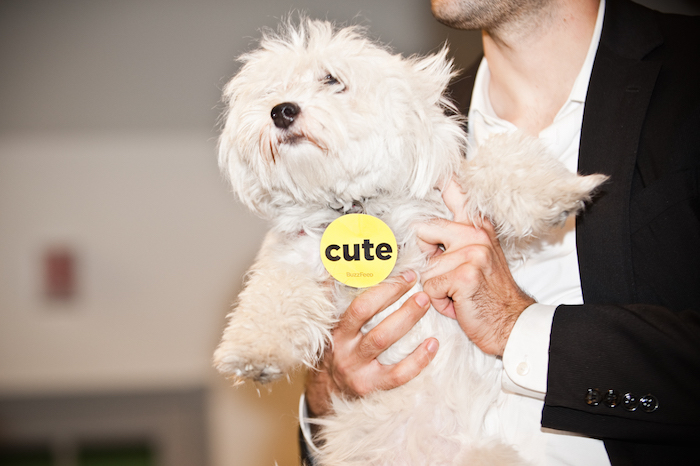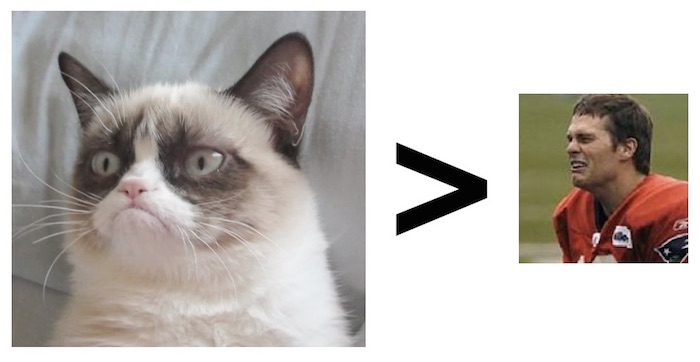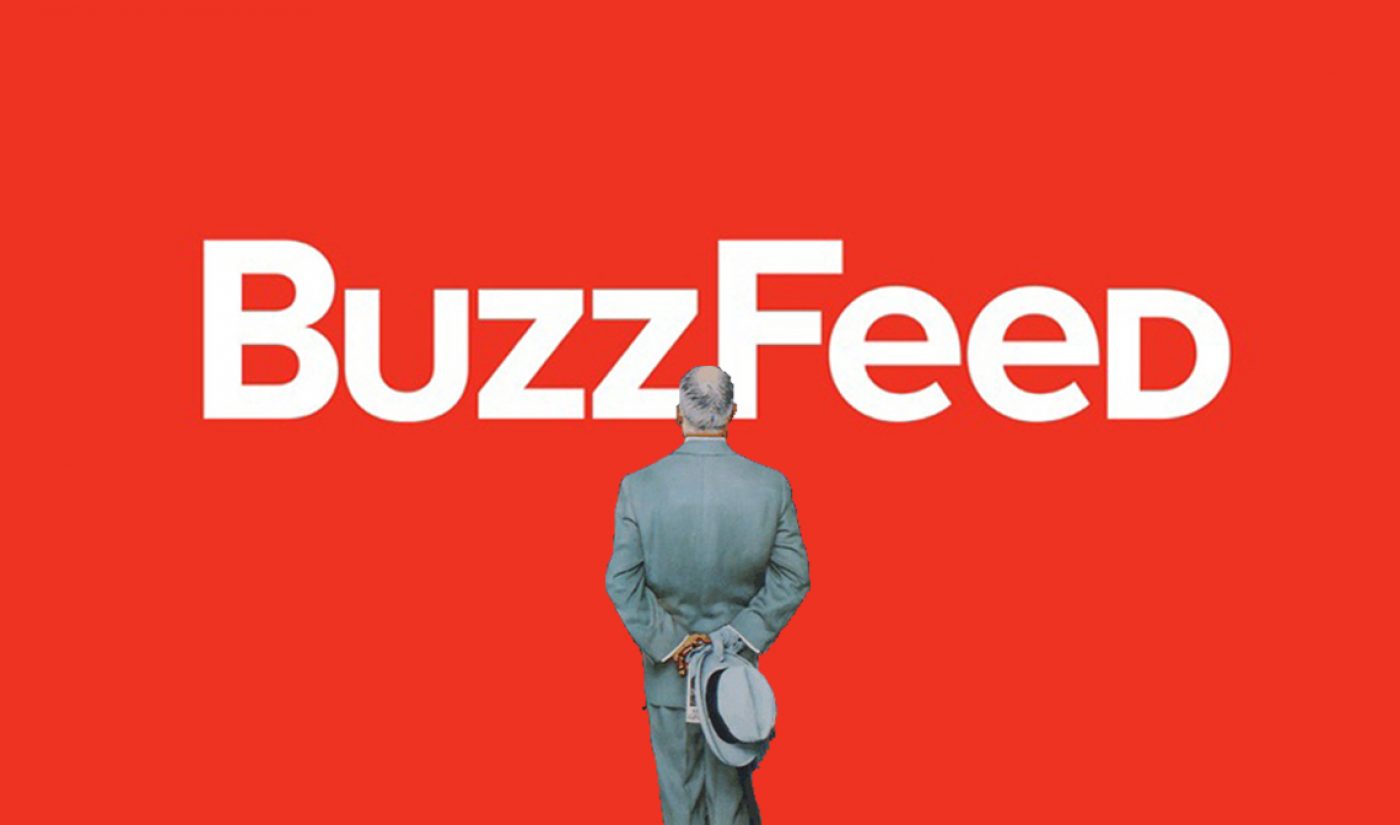“All men by nature desire to know.” – Aristotle
BuzzFeed’s massive success in video is unquestionable. Currently, the video offshoot of the incredibly popular site dedicated to listicles, animated GIFs, and hard news is generating over 250,000,000 views a month on YouTube alone, and that’s just on its flagship BuzzFeedVideo channel. If you add up the monthly views from BuzzFeed’s rainbow of brother and sister channels (including Blue, Yellow, Violet, Pop), that viewership number jumps up to more than half-a-billion. And again, that’s just on YouTube. BuzzFeed execs announced earlier this year that their content is generating over one billion views per month across all of their distribution points and channels. Furthermore, BuzzFeed’s YouTube viewership has grown by over 500% in the last year:

That is a lot of views.

Subscribe to get the latest creator news
I like solving puzzles and figuring out what makes systems work (e.g. YouTube annotations, YouTube thumbnails). That’s why when I saw BuzzFeed’s unbelievable growth and viewership numbers I asked myself, “Why is BuzzFeed’s video programming strategy so successful? And, more importantly, how can Frederator Networks apply what BuzzFeed is doing to our own channels and videos?”
This led me and my team at Frederator to begin reverse engineering BuzzFeed’s observable video strategy into actionable steps we could take at Channel Frederator. Because at Frederator, we’re always looking to make the most commercial (defined as what our audiences will love the most) content possible in whatever media sandbox we’re playing in, and BuzzFeed has some of the most commercial content in existence.
Our research findings inspired the fully-fledged series Tooned Up!, which in just three short months after it’s launch in December 2014 already started generating over 20 million monthly views across 40 videos.
Through our findings, we also found that every video creator has the ability to make highly shareable and highly relevant BuzzFeed style content, which will likely generate similar viewership. BuzzFeed’s programming strategy is actually very easy to grasp once you understand their system. My team and I at Frederator Networks have figured out this system and created an actionable set of categories, sub-categories, themes, title prompts and principles, which we’re now sharing with you.
The Breakdown
The powers that be at BuzzFeed say the organization creates videos in three main categories. However, these categories aren’t defined traditionally, like “educational” or “humor”, but instead by why someone would watch or share a video. And therein lies the brilliance of their programming strategy. Every video BuzzFeed makes is designed to be shared.
The three categories BuzzFeed’s videos are grouped into are:
- Identity
- Informational/Utility
- Emotional Gift
Let’s take a few paragraphs to dive deeper into them.
Identity videos have to do with who someone is, or believes they are. This type of content plays off of BuzzFeed CEO and Founder, Jonah Peretti’s central idea that the content we share helps us establish our identity to our circle and ourselves. In addition, BuzzFeed Motion Pictures’ President, Ze Frank often talks publicly about how the videos, pictures, or articles we share can better articulate who we are than we ever could. Identity videos, therefore, connect with us internally. We watch and share Identity videos because it allows us to better understand ourselves and those around us, and makes it easier to tell those around us who we are.
Informational/Utility videos are centered around things that are typically external. Informational and utility videos are often transactional in nature, where information is exchanged from one party to another. We watch and share Informational/Utility content because it has value to us in the form of better understanding the physical world around us and because it can educate us and the people in our lives.
Emotional Gift videos have to do with things that evoke emotional responses. This content is both internal and external as it typically uses external factors (puppy!) to affect us internally (awww!). We watch and share Emotional Gift content because when we feel an emotion like joy we want the people we care about to feel joy as well. This is the root of human connection.

After establishing what goes into each category my team and I boiled these broader concepts down to their core. We noticed that these three content types broke down roughly like this:
- Identity Videos – Things about You (Who/What/Where/Why/When/How You Are).
- Informational/Utility Videos – Things about your world.
- Emotional Gift Videos – Things that affect how you feel.
Keep in mind with all three content types there’s a lot of crossover. For example a video like, “19 Facts That Kitten Owners Know” (which I just made up and doesn’t exist, but probably should) covers all three segments:
- Identity: Kitten owners
- Information: 19 Facts
- Emotional Gift: KITTENS!!
Subcategories
Each of these video categories has multiple subcategories, too. Below is breakdown with some more titles I made up that may or may not exist as actual videos.
Identity Subcategories and Examples:
| Occupation | 7 things that piss off DOCTORS |
| Location/Nationality | The Most CANADIAN Man Ever |
| Gender | 5 Things That Suck About Being A GUY |
| Sexuality | You won’t believe how this woman responded to her STALKER |
| Interests/Likes | If GILMORE GIRLS had instagram (yes, this is a real headline from 2015) |
| Defining Characteristics | 15 things that make LEFTIES live’s difficult |
| School | OHIO STATE Fans React In Worst Way Possible To Winning Game |
| Time period | Things Only 90s KIDS Will Get |
| Pets/Animals | 17 Rescue Dogs Loving Their 2nd Chance At Life |
| Language | Why the ENGLISH LANGUAGE is literally the worst. |
| Politics | What this SENATOR just said about science will make you weep for humanity |
| Food | 21 Delicious Things To EAT in The South |
| Odd things a person does | 23 Things all HEAVY SWEATERS know to be true |
| The “Other” (what you are not) | How A CATHOLIC MOM Learned To Love Her Trans Son – And His Wife |
Informational/Utility Subcategories and Examples:
| Facts about what you like | Why GAME OF THRONES is the best show on TV |
| Facts about what your friends like | These OBSCURE FACTS will change how you view VEGANS. |
| Proving/Disproving anargument | PROOF that Your Mom Knew Best |
| Humblebrag | BEST CITIES in America To Live In |
| News | 2014 Was The HOTTEST YEAR EVER on Earth |
| Celebrity | 10 Reasons The KARDASHIANS are the Worst |
| Why people do things | 5 Reasons Why You Should DRINK WINE EVERY DAY |
| How to do things | You’ve Been BRUSHING YOUR TEETH Wrong |
| Politics | You Won’t Believe How Much DICK CHENEY Paid To Kill A Homeless Person |
| Travel/Exoticness | Traveling to THIS PLACE Will Change How You View The World |
Emotional Gift Subcategories and Examples:
| Inspirational | You Won’t Believe The Way This Guy OVERCAME HIS FEAR of Snakes |
| Happy/Sad | These Five PUPPY GIFS Will Make Your Day |
| Awkward | 27 Tumblr Posts That Perfectly Sum Up How ADDICTED You Are To DOWNTON ABBEY |
| Shocking/Disbelief | I Could Have Been SENTENCED TO PRISON For A MISCARRIAGE |
| Outrage/Injustice | Students Fight For Teacher After Nebraska Catholic School FIRES HIM FOR BEING GAY |
| Commiserate | 18 Times “The Simpsons” Totally Got WHAT IT’S LIKE TO BE A Woman |
| Justice/Shadenfreude | Kenan Thompson Reportedly Said BILL COSBY Has Turn Into A “MONSTER” |
| Beauty/Pleasantness | Can You Make It Through This Post Without GETTING PREGNANT? (Yes, this is an actual title from BuzzFeed) |
| Discomfort/Horror | 19 TERRIFYINGLY INAPPROPRIATE Moments From Kids’ Books |
| Funny/Stress Relief | This Actor’s 20 ROBIN WILLIAMS IMPRESSIONS Are Unbelievable |
| Sexuality | 17 People Who Got UNSPEAKABLY HORNY Due To “Game Of Thrones” (also a real title). |
We also put together a handy list of title prompts for each category to get you thinking about subject matters that would make for good programming. Note there’s a lot of crossover of prompts between the three main content groups.
Identity Title Starters:
- Things only __ will understand
- Which ___ (character) are you
- Before you die
- In your life
- # Reasons you (should)
- Signs you should
- Photos that prove
- # things that happened
- In real life
- Things that happen
- # things you
- # signs you’re
- You should be
- Things you didn’t
- ____ People Try ____
Information Title Starters:
- You probably didn’t (know/think/feel)
- Reasons ____ Are the most
- Reasons you should
- # You Probably didn’t know about ____
- Most important
- ____ You didn’t know about ____
- ____ Of all time
- Blow your mind
- # Things that happened
- # Things you didn’t know about ____
- What ___ People Think About ____
Emotional Gift Title Starters:
- # ____ To get you through your day
- You won’t believe ____
- # Amazing photos that ____
- ____ That give absolutely zero F#@%s
- ____ You need to see to believe
- ____ That will ruin your childhood
- # Best ____
- # Craziest ____
- ____ Will change the way you see ____
- ____ That will blow your mind
- How well do you know ____
- If __ was ____
- Weird facts about ___
- You’ve been doing ___ wrong
Programming Strategy General Principles and Themes
After doing this structural breakdown, my team and I sat down and took a look at the general principles and themes that were apparent in BuzzFeed’s content strategy.
Positivity. BuzzFeed is 100% positive. Every post, every video, every tweet, for the most part, is positive and happy. If you click on an article or play on a video from BuzzFeed, you’re entering a party. The primary benefit (there are many) is that this positivity ensures that every video, blog post, tweet, etc. is inclusive. That further ensures BuzzFeed is palatable to an ever expanding audience (no one is excluded), and keeps the BuzzFeed brand favorable in people’s minds.
Promise. BuzzFeed is one of the few exceptions to the rule of “if you’re everything to everyone, you’re nothing to no one.” BuzzFeed is everything to everyone because it caters to all (with a slant towards internet native millennials) as part of its core promise, which is an extension of its positivity and inclusivity. BuzzFeed’s promise is that it will hold up the mirror and tell you how great you and people like you are (e.g. your obsession with Dr. Who is totally cool!). Following this line of thought, if we live in a narcissistic culture, BuzzFeed epitomizes that culture. If the purpose of art is to hold up a mirror to society than BuzzFeed is the most perfect mirror ever created.
Relevancy. A video’s popularity is often decided by how relevant it is to how large of an audience. For example, a video aimed at people who like cats will probably do better than a video aimed at people who like Tom Brady because cats are more relevant to more people than Tom Brady. Relevancy is actually linked to a number of the principles outlined here, including tones and types of content (positivity, relationships, voyeurism, humans are weird, etc.), and how that content is seen by the public (distribution strategy, channel strategy, language, etc.).

Relationships. One thing that all three of BuzzFeed’s content categories have in common is that they center around relationships. Relationships are how we define ourselves, those around us and the world. Relationships are at the center of all storytelling, media and art. Therefore, it’s no surprise BuzzFeed’s content – that is solely driven by the desire to understand these relationships – is so incredibly popular.
Managing Expectations. One of the things we appreciate most about BuzzFeed’s strategy is that a viewer knows exactly what they are going to get when they click on a BuzzFeed video. This is because BuzzFeed’s programming (what’s in the video/article) exactly matches the title. For example, the title of one of Shane Dawson’s latest uploads is “HIGH SCHOOL SUCKS”. You think the video is about high school sucking, right? Wrong, it’s a promo for Shane’s new book (and that may be a-okay for Dawson’s audience of seven million YouTube subscribers, but it may also be misleading for a large percentage of random viewers who happen upon the video).
Now take a title from a recent BuzzFeed video: “People Try ‘As Seen On Tv’ Products”. Guess what this video is about. You’re right! This is a video where people try “As Seen On Tv” products.
By fulfilling the promise to the viewer of what the title claims the video to be about, the viewer is satisfied and happy. Happy viewers means they will ultimately watch more videos because they know exactly what they are going to get.
Niche. Super-serving niche audiences keeps your total audience pool expanding as a whole. For example, creating a video just about left-handed people may only appeal to a small niche, but this niche has other interests and will likely find other content of yours they want to watch. Furthermore, lefties will likely share this video to explain themselves and non-lefties will share this video with people they know are left handed.
Information gaps. Create an information gap in your audience through proper headlines/titles. An effective title will make someone ask Why, Who, Which, What, Where, When or How? This causes them to want to watch that video (or read that article) because they now have an information gap to fill. If we use our example above, “19 Facts That Kitten Owners Know”, the information gap would be “What do I not know?” or “Do I know These Things?”.
Explaining the unexplained/Voyeurism. A lot of BuzzFeed’s content attempts to explain the unexplained (the Why’s and How’s of life) as well as provide voyeuristic opportunities for people. This plays off of our desire as human beings to want to know, or at least not appear uninformed. Giving us this opportunity to be voyeurs allows us to learn these previously unknown things with no risk of appearing stupid.
Funny is money. The vast majority of BuzzFeed’s content aims to be funny or humorous on some level, in part because the best emotional gift you can give someone is to make them laugh. Even information/utility content often has a humorous slant to it. This plays really well with their other principles, like staying positive, being inclusive, etc.
Humans are weird and that’s okay! Catering to all audiences means you have to explore some things that the “mainstream” might find weird to talk about in both general and specific terms. Thing of topics having to do with drug culture, sexuality, and other taboo subjects (e.g. What’s Living in Your Bellybutton?) Making these human oddities okay to explore and discuss in a positive and inclusive way further allows BuzzFeed to continually expand its audience.
Channel Strategy. BuzzFeed’s channel strategy (with the aforementioned Videos, Blue, Yellow, Violet, and Pop YouTube channels) is based on mood. The theory goes that if you’re watching a video, you’re doing so to feel a certain emotion and you are likely to want to keep feeling this emotion. With that in mind, you’ll watch more videos that elicit this emotion.
Distribution Strategy. Jonah Peretti and Ze Frank have both recently pointed out that different types of content perform better on different platforms. While this premise is obvious, the way BuzzFeed looks at it is a bit unique and also logical. For example, they say Informational/Utility videos do better on YouTube and Identity videos do better on Facebook. This actually makes a lot of sense. Facebook is where we share things and see things about others relating to who we are and what we like. It’s always been that way as a platform. On the opposite end of the spectrum, cinéma vérité has always been the most popular type of content on YouTube (and, yes, I did just use cinéma vérité to describe cat videos and vlogs).
Statistics and Data. There’s no doubt I’m an analytics junkie, so please read what I write next with that in mind. BuzzFeed can have all the stats, data, “scalable solutions”, and technology in the world, and maybe that helps their investors sleep better and their content perform better by a few percentage points. But at the end of the day, media is about humans connecting with each other (and themselves), and BuzzFeed is best in breed at fostering that connection digitally. The data and and analysis idiosyncrasies that comprise the massive BuzzFeed machine merely assists that connection, it doesn’t make it.
Testing/Experimentation. BuzzFeed appears to do a great deal of testing and experimentation in their programming strategies. They are constantly trying out new content types to see what will resonate. For example, BuzzFeed has a series of videos that are formatted as “______ TRIES _____ FOR THE FIRST TIME.” This content seems to have debuted on their channel in July of 2014. Several months later, in September 2014 BuzzFeed launched the “Try Guys” series. It’s essentially the same exact format, but is really the first series BuzzFeed has done around set characters. They tested the format, saw that it works, and then created their first series out of the content type.
Language. The language BuzzFeed uses is the most important principle on this list because it encompasses all of the above. This communication must be relevant to the audience and use language the target audience uses. The majority of BuzzFeed’s audience are digital native millennials. This is why titles like “This Instagram Account Literally Can’t Even And It’s Amazing” gets nearly a million views.
How Can You Make BuzzFeed Style Content
As I mentioned before, anyone can apply this programming strategy to their content, niche, topic or interest. Do you have a beauty channel? Why not start with a video of “How You Can Dress Like Beyonce” Or is your channel all about fast cars? How about create some content around “8 Things Only Gear Heads Know” Or do you make videos about food? How about “7 Signs You’re Obsessed With Buffalo Wings”. And on and on and on.
If you use what we’ve laid out above in terms of categories, sub-categories, themes, title prompts and principles you can easily make content similar to BuzzFeed’s and potentially reap similar rewards. And like I said before, don’t just take my word for it. We’ve tried it at Frederator. And it seems to work.








